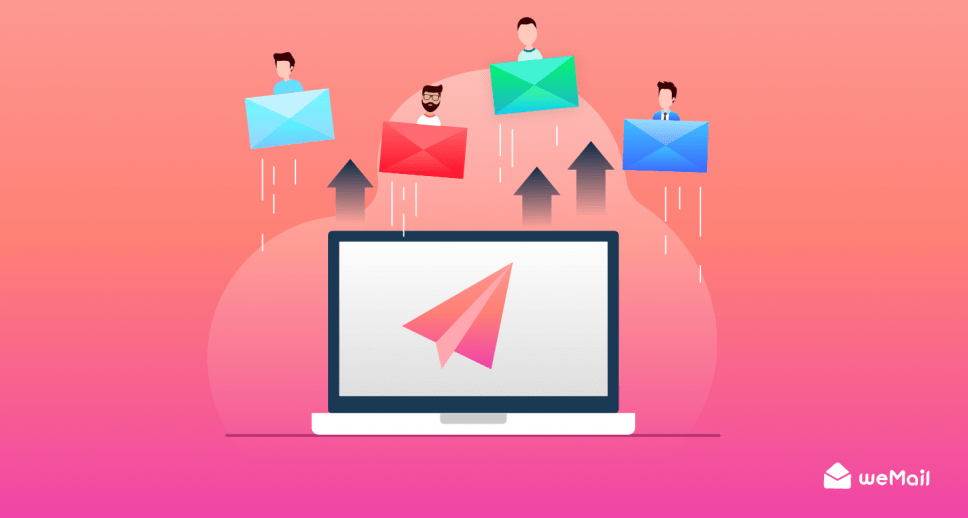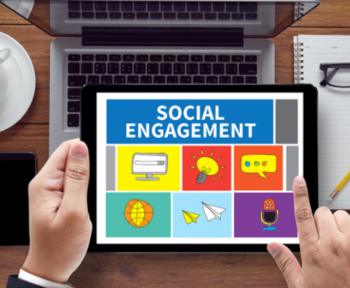The origins of email marketing go back a long way: the first marketing email was sent in 1978, with sales of $ 13 million. Since then, email marketing has become one of the most important and widely used channels. While new channels such as instant messaging or social media have surpassed the classics in terms of attractiveness, e-mail marketing is an effective way to strengthen customer loyalty, which is certainly very important in the future as well. Ready.
Table of Contents
Email Marketing: Tips, Strategy & Requirements
Companies that use e-mail marketing properly have a twofold advantage: they increase their sales and at the same time strengthen customer loyalty.
“Fair use” means that you are harassing your customers and continuing with spam-like emails or communicating with them on a highly personal level. Instead, you should use email to further enhance relationships with your prospects by providing the right information at the right time.
So the focus is mainly on the needs of your potential customers, not on your own goals.
If you follow this simple principle, you can motivate your customers with your email.
Here’s a detailed look at why a robust email marketing strategy remains a cornerstone of successful marketing, what rules and regulations to follow and how to use email marketing most effectively.
Email marketing has proven to be effective
Today billions of people around the world are constantly communicating via email and companies that do not use this channel are missing out on a great opportunity to reach their target audience. It pays an average of $ 42 for every $ 1 invested in an email marketing campaign. This equates to an impressive 4,200% ROI.
The following statistics also show how effective email marketing can really be:
At 76%, email is the second most popular way for B2C marketers to systematically deliver content to their target audience.
There will be a total of 3.9 billion email users worldwide in 2019. According to estimates, this number will increase to about 4.3 billion by 2023.
The number of emails sent every day is growing and is estimated to be around 376 billion by 2025. By comparison: in 2017 that number was still 269 billion.
However, the biggest advantage of email marketing is that you have complete control over this channel. In addition to applicable data protection laws such as GDPR, there are no formal rules to follow so that you can decide independently how, when and for what reason to send an e-mail.
With e-mail marketing, you can reach multiple potential new customers at the same time, establish and maintain personal relationships with them – and all at no extra cost or expense.
Email marketing can be used in many ways
Use email for the following purposes:
- Building personal relationships: Personalized emails strengthen customer loyalty.
- Increase Brand Awareness: Email is a great way to remind your potential customers about your brand and products at the right time.
- Content Marketing: Send relevant blog posts or other useful content to your potential customers.
- Lead Generation: Provide your customers with interesting content offers in exchange for their contact information.
- Product Marketing: Use email to promote your products and services.
- Lead Nurture: Make your customers happy by using relevant content to help them achieve their specific goals.
Getting Started with Email Marketing
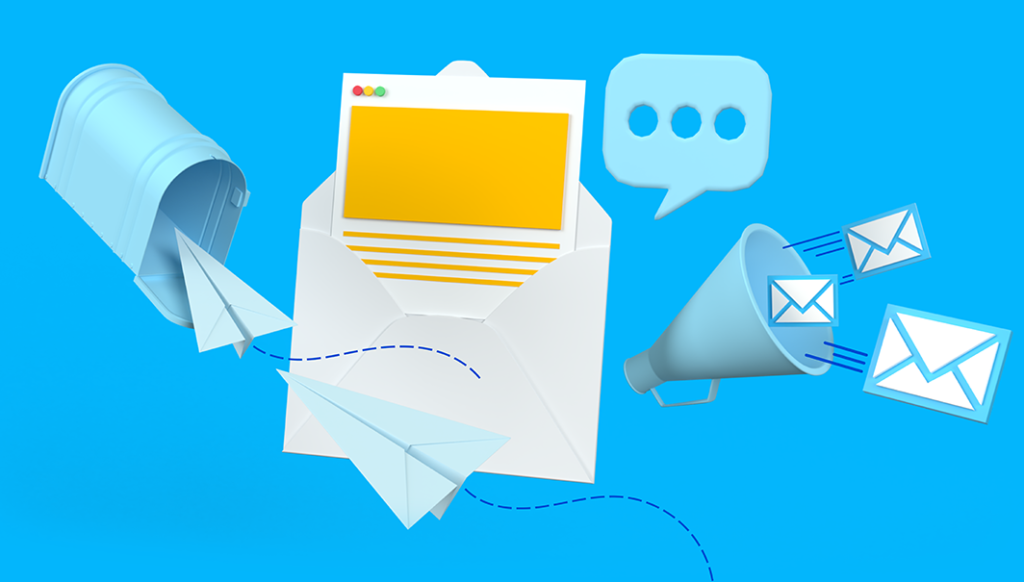
An effective strategy is needed to uncover the full potential of email marketing and to create compelling email campaigns.
Tips for Creating an Email Marketing Strategy
Your customers’ inboxes are already full due to the daily flow of emails. So you need to think of something to prevent your emails from getting lost in this mass or ending up in a spam folder.
This means that you need an effective email marketing strategy that you can use to ensure that your emails are actually read.
Generally, it takes only six simple steps:
1. Define the target group
Emails are effective when they are relevant to their recipients, that is, tailored to your specific target group. As with any other marketing activity, the first step is to define your ideal customer – what you call a buyer’s personality. Because if you know the needs of your target group, you can only align your e-mail campaign with them.
2. Set goals
To set realistic goals for your campaigns, you need benchmarks. So first, find out what email campaign results will result in your industry, and then use those metrics as benchmarks for your goals.
3. Create a list of recipients
Of course, you need the email addresses of potential customers who are interested in sending you the email first. You will collect these on the mailing list. Since your potential customers have practically registered themselves on this list (via the opt-in form), it makes sense to give them the opportunity to register as often as possible.
Do not be discouraged if your contact list is too short at first. After all, good things take time. Always remember that your customers and leads are your most valuable resources and stay in touch with them accordingly. Then your list will automatically increase.
4. Select the email campaign type
There is no simple answer to the question of what kind of publicity is best in a particular context. Depending on the target group, weekly newsletters, product announcements, or blog posts may be useful.
It is best to take a brief look at your options first, get acquainted with the different types of email campaigns, and then decide which type resonates best with your target group. Tip: If you create different recipient lists for different campaign types from the beginning, this decision will be easier for you in the future as you have already segmented your contacts by preferred campaign type.
5. Set a schedule
Decide in advance how often you want to send emails and share this information with your customers. The downside of this is that by adhering to the specified program, you gain the trust of your customers. Do not choose too large distances, otherwise, you run the risk of being forgotten by your potential customers.
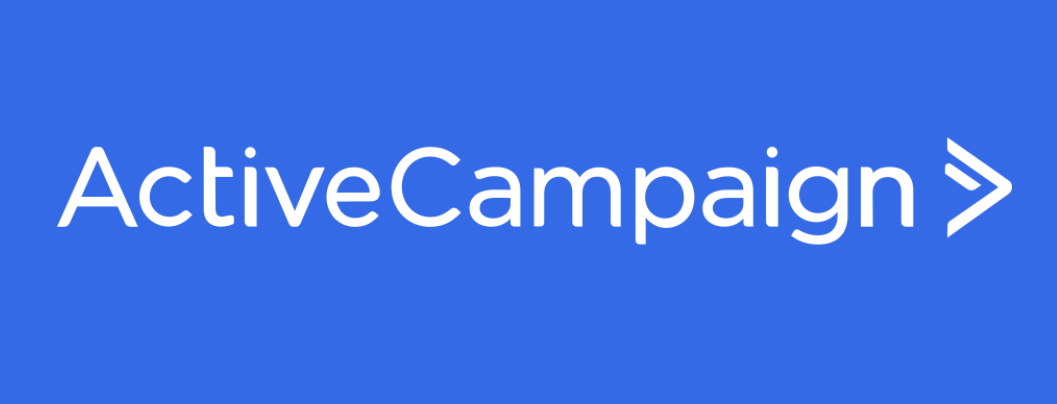
Click here to start your free trial
6. Analyze the results
Capturing and measuring scales is one of the most important tasks of any marketing team and the more careful you are about it the better. Even small adjustments can give excellent results. In this article, you will find out what key statistics (KPIs) play a role in email marketing.
Create and expand the list of recipients
There are many different effective ways to increase your contact list (although purchasing email addresses is not one of them). Basically, it is enough to focus on the two most important elements used in conjunction: attractive content and opt-in forms.
Attractive content
It’s exactly like that: content, usually a free offer, attracts potential customers or leads and encourages them to share their contact information with you. Basically, any offer is free and possible as long as it adds value to your interested parties.
This can be difficult without the added value as many users are careful in maintaining their contact information. They care about the security of their personal data and do not give it away easily. So, instead of their email address, provide them with something relevant, helpful and that will make their lives easier.
Here are some examples:
- Ebooks
- White paper
- Article information
- Report or study
- Checklist
- Template
- Webinars or training courses
You can easily recycle existing content and customize it so you can use it for lead generation.
How to create effective lead generation content?
To create effective content, all you have to do is follow these rules:
1. Provide an understandable solution to a specific problem.
Choose a problem that your target audience often encounters and provide an easy solution to implement.
2. Choose a user-friendly format.
The content provided should be provided in digital format whenever possible, i. h. PDF file, web page, video, or similar as an easily accessible form.
3. Specify the content and scope of your offer.
When marketing your offers, set realistic expectations. Because if your customers expect anything more from the advertised content, they will be dissatisfied – and should stay away from dissatisfied customers.
4. Align your offers with your broader goal – to sell your products.
After all, the real purpose of free offers is to collect email addresses from potential customers to show you the benefits of your products and ultimately persuade them to buy.
5. Design your offer to the stage of the sales process where your target group is currently.
All new leads are not automatically in the same stage of the buying process – also known as buyer travel – and it is your job to make sure you are trying them right. You can ensure this by splitting your list of recipients from scratch and offering different offers for different stages.
Create attractive opt-in forms

Depending on how you see it, opt-in forms provide two benefits: they give you valuable contact details about the opportunities you need to turn them into leads and ultimately customers. And instead, they provide access to support material that will help your potential customers solve the problem. To make sure your customers also fill out your forms, you need to pay attention to a few important things:
Choose an attractive design and interesting title
Opt-in forms should be attractive, appealing, and unique to your business. Prepare a title and description to keep customers interested in your offer.
Be sure to set realistic expectations
Remember that your long-term goal is to win customers. So do not try to deceive customers into providing your contact details under false pretenses, instead display the content of your offer clearly and concisely.
Keep your forms as simple as possible
Since this is one of the first interactions between prospects and your business, it is best to keep your choice form as minimal as possible. Otherwise, you run the risk of scaring your chances. It is best to limit yourself to the most important information such as names and e-mail addresses.
Confirm the registration as a double opt-in
Asking consumers twice for their consent may seem counterintuitive, but the process pays off: the average bounce rate in 2019 was just 0.4 percent, according to one study. This proves to be a clean double opt-in filter for customers who are genuinely interested in your offers.
Test the process
In general, it is a good idea to test the customer experience you provide from the perspective of your potential customers. Finally, verify that the forms are working, the thank you pages appear and the offers are actually being submitted. Be sure to make the process as smooth and professional as possible. Finally, you want to make a good first impression on your new leads.
Best practices in email marketing

My personal favorite try an active campaign for free.
After receiving your customer contact details, your customers and leads are waiting to hear from you. However, before you start sending newsletters, you must first take some important precautions to ensure that your emails are not marked as spam or blocked.
Tips for creating and scheduling emails
Since every single professional email task is generating new leads, it is important to plan carefully and take all factors into consideration. Unlike personal emails, where you do not think much about things like format or subject line, marketing emails need to think a lot, because it is best to send it to your readers for customization. How to optimize in the best way. Device.
The following factors have a decisive impact on marketing email success:
Subject line: A good subject line is short and sweet, captures the recipient’s interest, is personalized, and captures email content. It is important to note that most mobile devices display only the first 30 characters.
Email content: Focus on one topic at a time and make sure your emails are tailored to your brand.
Images: Make sure that content like images is displayed on all devices, fits the theme, and catches the attention of your readers.
Call-to-Action: The call-to-action (CTA) that gives readers access to promoted offers must also be separate from other emails.
Time: Sending time is an important factor in email marketing. The Email Marketing Benchmark 2021 study analyzed 3554 email sending data from the top 5000 companies, with Thursday being the best time to send email to both B2B and B2C.
Mobile-compatible: With over 55% of emails open on mobile devices, you need to make sure your email is mobile and optimized for all other devices.
Personalization: Personalize your e-mails and make sure they are authentic and attractive. The best way to do this is to mentally address your email to your friend. Include information about your target group (age, gender, interests …) in the words of your newsletter to create a personalized mailing. The personal subject line also has a positive effect on the reader’s vision.
Contact segmentation
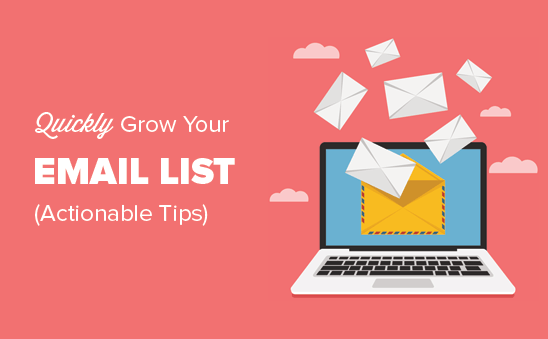
Segmentation is the act of dividing your long list of email addresses into sub-categories based on your customers’ characteristics, interests, and needs.
Without this type of partition, you will not be able to personalize your email, only sending bulk emails that are not private to you. However, we strongly advise against this. Otherwise, you run the risk of losing content that you send to customers who are completely unrelated.
Reasons to segment contacts
As mentioned, not all new leads in the buying process are automatically in the same stage and some are ready to buy more than others at the time of signing up.
If you do not take this into account and, for example, send coupons to customers who are just beginning to reach the bottom of a particular issue, you run the risk of losing them and losing them. Because in this case, you missed an important step: building the foundation of trust and personal connection.
And the same thing happens when you send personalized bulk emails.
However, the more carefully you divide your contacts, the more uniquely you can respond to your customers’ personal needs and the more likely you are to gain their trust. And the higher the trust, the greater the desire to buy.
One study showed that 39% of all emails are sent in segments, which also confirms that marketers recognize the trend.
How to Segment your contacts?
The first step in dividing contacts is to create separate contact lists from the beginning based on each step of the sales process. The best way to do this is with content offers and opt-in forms tailored to specific stores.
Additionally, most email marketing tools provide features for segment recipient lists based on contact information or behavioral data.
Here are some examples of criteria you can use to separate your contacts:
- Position
- Life cycle phase
- Steps in the buyer’s journey (understanding, observation, or decision stage)
- Industry
- Engage with your brand
- Job Title
Basically, you can choose any criteria you like until you make sure that your e-mails also fit the target group you have chosen.
Personalization
Now that you have personal information about your email recipients and their needs, this information is easy to use to personalize your email.
It’s true that you are still sending the same email to countless contacts, but with one big difference: it’s not obvious to your email recipients.
Personalization also doesn’t take much effort, because if you use personalization tokens, they do a lot of work anyway.
Here are some examples of how you can personalize email:
- Include the recipient’s (first) name in the subject line and/or salutation.
- If possible, include area-specific information.
- Compare the content offers you send to your recipients at the relevant lifecycle stage.
- Always see the recipient’s recent interactions with your brand.
- Send emails to identify region-specific or personal events (holidays, birthdays, etc.).
- Put the employee signature at the bottom of the email instead of your company name. It makes you feel closer and increases confidence.
- Provide access to relevant content through attractive CTAs.
Automation
You have the option of automatically sending personalized emails based on your segmented list. There are basically two options available to you:
1. Autoresponders
Strategically, autoresponders fall into the category of drip marketing and are programs that allow you to automate sending based on email. For example, you can start the e-mail sending process by downloading the e-book.
Make sure you follow the best practices mentioned above for automated email, as well as provide only relevant and useful information to your recipients. If necessary, you can use an autoresponder to automatically send a series of emails within the specified period.
Self-responses are very useful because they work a lot for you. All you have to do is specify the e-mails to be sent, your target group, and the sending time – the e-mail marketing software will take care of everything else.
2. Workflow
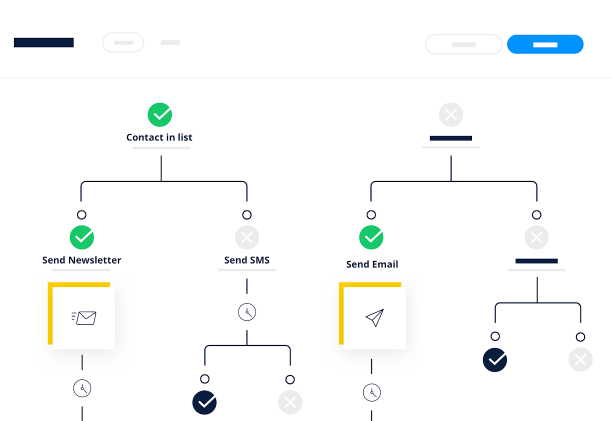
Workflows perform functions similar to autoresponders but offer a wider range of tasks. The course of the process is flexible and you can imagine a workflow similar to a flowchart that is constantly redefined (by the yes/no buttons). These branches are created based on the criteria you pre-defined.
Basically, two main criteria should be defined for each workflow:
- First, you need to specify the action that qualifies you for registration in the workflow, i.e. set the registration criteria.
- Second, you must specify the target, i.e. the action that prompts its implementation to remove contacts from the H.Workflow.
- The workflow recognizes when the contact opens the email or downloads the offer and can initiate a specific process based on the specific action, such as sending a series of emails or moving that contact to the next life cycle stage.
- The main difference between responses and workflows is that workflows are “smart”. Unlike autoresponders, workflows can determine the order in which emails are sent and rely on the behavior of the recipients.
Example: You first set up a workflow that sends a welcome email to contacts and then goes to the next step by providing specific content.
However, one of the recipients may have already found and downloaded this offer on your website. If you use an autoresponder, that contact will now receive the offer again. On the other hand, the workflow can be configured to detect this situation and the next course of the process will be adjusted automatically.
This benefit should not be underestimated, as sending an email at the wrong time can have negative consequences – even if the content is actually related to the recipient. In fact, it turned out that 68 percent of customers lost permanently after experiencing a negative experience with the company.
Important rules for sending emails
Not only is it important for your customers to know why their data is being collected and how it is being used, but they also have a right to know. For example, it is embedded in the General Data Protection Regulation (GDPR), which came into force in May 2018 and is part of the basic knowledge for marketers.
Important Note: The information provided here is not legal advice.
Before we delve deeper into GDPR, here are some general tips to ensure regulatory compliance:
- Include your company name and address in each email.
- Include unsubscribe links in your email and keep them easily visible.
- Enter only valid email addresses as sender and reply addresses.
- Make sure your subject lines match your email content.
GDPR Compliance
Most people initially respond to changes with skepticism – and depending on the far-reaching changes brought about by GDPR, there is some resentment between companies as you might expect. But anyone who sees the provisions of the GDPR as unnecessary extra work is misreporting their potential. In fact, GDPR makes it easier for companies to build long-term customer relationships and strengthen customer loyalty.
In addition, the basics of GDPR go hand in hand with online marketing inbound methodology. Because the right to decide when, where, and how to contact them gives users control. GDPR ensures that potential customers contact you with their own contract – and this is what inbound marketing is all about.
An important note: GDPR also applies to companies outside the EU that collect and process data from EU citizens. We recommend that you consider the terms of the GDPR in detail, as non-compliance with the GDPR can result in serious penalties.
In short, GDPR provides the following actions:
- Explain your customers’ data in clear and simple language for what purposes you use it.
- Collect only necessary and relevant data for the specified purposes.
- Properly protect the stored data and process it only for the purpose specified earlier.
- Store data only for legitimate use as specified in fact.
- Delete user data immediately if they ask you to do so.
- Provide an easy way for customers to unsubscribe or make changes to their subscriptions.
- Provide customers with a copy of the data stored about them immediately upon request.
- Document your consent with GDPR.
- Appoint a data officer to confirm compliance.
Since these are legal requirements, if you have not already done so, we recommend that you develop a GDPR strategy and then base your email strategy on it.
Avoid spam filters
However, you should do everything you can to ensure that the emails you think about are not ending up in the spam folder.
Not only because you put a lot of time and effort into it, but also because
- Affects your overall delivery rate,
- As a result, your contacts will not be able to read your email,
- Distorts your email marketing impact metrics and your overall statistics.
Here’s how to prevent your email from being marked as spam:
White list
Whitelisting means that all the senders listed in this list are generally considered trustworthy and their e-mails are never classified as spam. So your goal is to whitelist your customers. The easiest way to do this is to ask your customers to save their email addresses in their address lists. You can do this by adding instructions to your welcome email.
Avoid spam triggers
Avoid spam triggers such as capitalization and multiple exclamation marks, as well as signal words such as “opt-in,” “click-down,” and “order”, which are common triggers of Internet service providers (ISPs) spam filters.
Select the email service provider you have installed
Whether your e-mail service provider is generally rated more positively or negatively may also affect your e-mail delivery. Therefore, it is best to choose a well-known, well-established provider, then you are on the safe side.
Implement double opt-in policies
Send email to new customers to confirm their membership. That way, you can be sure that they’ve deliberately subscribed to your emails and will mark them as spam later.
Analyze email campaign metrics and results
The most important task of marketers is to collect key statistics on the performance of their marketing activities. They need these key people to make well-established decisions and justify them to management.
The best way to determine the effectiveness of an email campaign is to use one of the following methods:
A/B-Test
You do not know what kind of emails will go well with your contacts. Some appreciate personal messages, some do not. Some like attractive call-to-action, others like it.
Some prefer a glowing call to action, while others prefer a definite opposition. That’s why you need a way to figure out what kind of campaign will give you the best results for your specific audience.
And here comes the A/B test. With A/B testing, also known as “split testing”, you can test in advance whether two types of e-mail will be better received by your target group.
To do this, proceed as follows:
- Decide which variables you want to test and select one of them. (Testing multiple items at the same time is not recommended.)
- Create two types of your email, one with related variables and the other with corresponding variables.
- Test both emails at the same time.
- Analyze the results and ignore the poorly performing version.
- Repeat this process with the next variable you want to test.
- Since most email clients today offer A / B testing capabilities, you can easily evaluate the results later.
How to improve your results?
Since these metrics are influenced by many different factors, little experimentation is needed to see how the results can be improved.
Here are some tips to help you optimize your email performance:
Deliver
Avoid spam filters by following the best practices that are appropriate.
Remove members from your list of recipients who have never read your email anyway.
Also, remove recipients who cannot deliver your emails from your list.
Open rate
- Test if there is a difference due to changing the subject line.
- Also, check which shipping day and shipping time leads to the highest open rate.
Click rate
- Evaluate whether the selected content actually adds value to your target group.
- Edit the text (including the CTA) and try to be more clear.
- Test different CTAs to find out what kind of CTA resonates best: attractive or subtle, embedded in the text or as a separate button, etc.
Cancel rate
- First, it should be noted that not all cancellations are negative. Because if you remove yourself from your list of customers sooner or later due to lack of interest, it will eventually save you time.
Check if your email style really fits your brand.
Check to see if your customers expect anything different from your content offer and if you can make the description a little more accurate.
Conclusion: Customize your own e-mail marketing with CRM software
Whether you want to keep your customers long-term with personalized e-mails or persuade potential customers to a new offer. E-mail marketing is suitable for small and large companies and should not be missed in any marketing strategy. However, when implementing and executing email campaigns, always observe GDPR’s rules to be legally secure. A good CRM platform will help you keep track of your email marketing efforts and optimize email campaigns as best you can.

